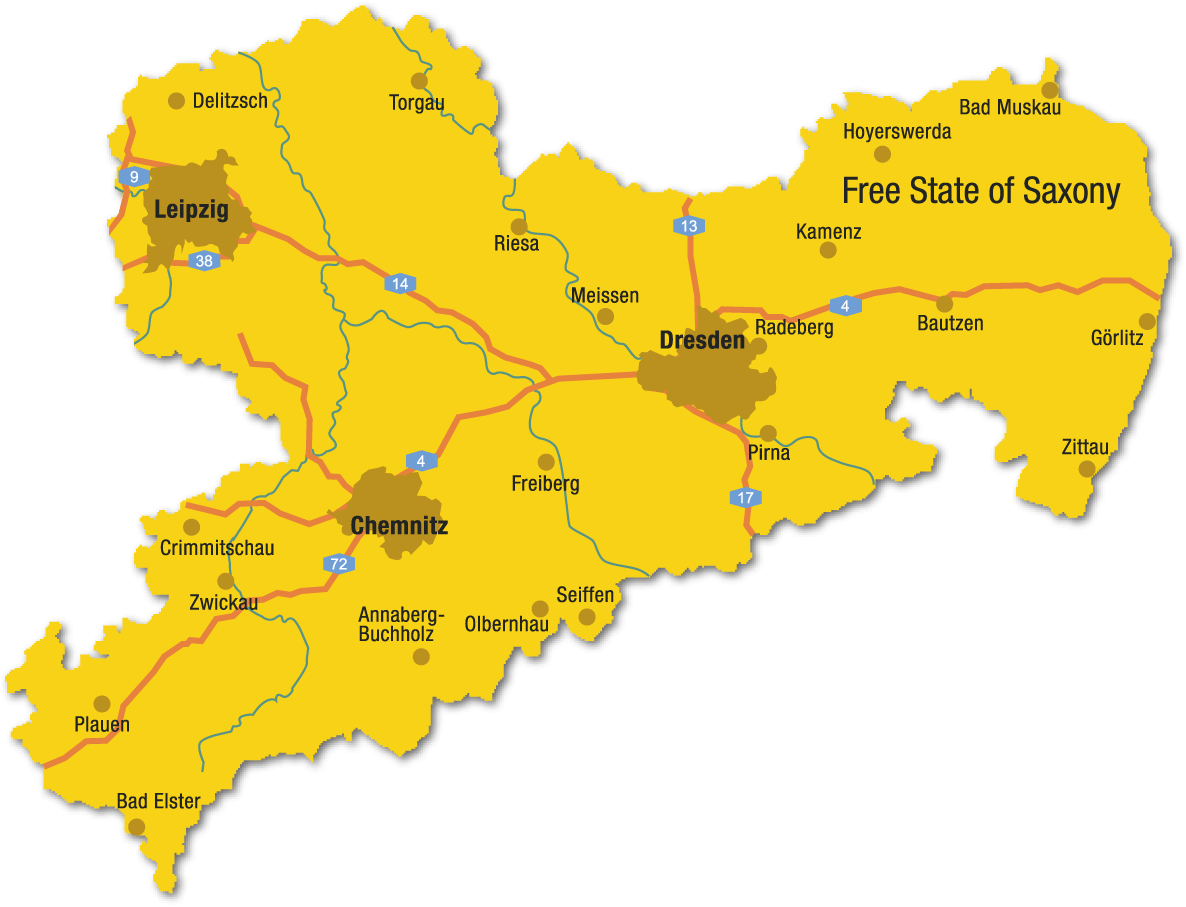This year, we commemorate the 350th birthday of a man who gave the Saxon architectural landscape a unique image. But who actually was that man who started out on his career from an unpaid job to be later promoted to become supervisor of the Supreme Building Authority?
Matthaeus Daniel Poeppelmann was born in 1662 in Westphalian Herford and came to Dresden when he was about 18 years of age. He diligently climbed the ladder in the Building Authority although he was a civil engineer. Poeppelmann was gifted in many ways and had an understanding of not only giving splendour and grandiosity to highly noble buildings, but he also dealt with Dresden’s civic structures, embankments and streets. Several educational trips took him all across Europe. His newly gathered impressions merged in the typical Saxon Baroque that is still visible today and have made him the most important representative of the Saxon-Augustinian style. Poeppelmann accomplished a somewhat unusual job in 1730 during the time of the Zeithain Encampment: He built an oversized baking oven for the bakerman to bake a giant Christmas stollen to then be delivered to the Elector’s tent and presented to him and his guests. This is still a popular tradition followed at today’s Dresden Christmas Market.
Dresden Zwinger (A)
Today, the south-western part of Dresden’s fortification is also its hallmark. Only those who have visited the Zwinger will be able to understand the Saxons and the pride they take in their country. This complex piece of art dating from the time of the High Baroque enchants the visitor by its serenity and variety of individual shapes and sculptures. It all began with the orangery for the rare southern plants, which was planned by Poeppelmann and commissioned by Augustus the Strong. Those plants were to be given shelter protecting them from weather and wind, built at the west side of the fortress. Plans were later implemented to connect the two pavilions and the orangery to form a festive ground. Poeppelmann found a like-minded person in Balthasar Permoser who assumed the overall concept design of figural ornamentation in the Zwinger. He was one of the most outstanding sculptors of the Baroque. The Dresden Fine Art Collections started moving into the Zwinger from 1728 onwards – including well-known pieces of art of the Armoury and Porcelain Collection.
Details on the Dresden Zwinger
Further to Station B – Gross-Sedlitz Baroque Garden, approx. 19km
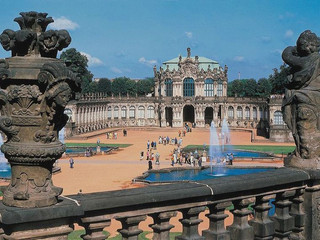
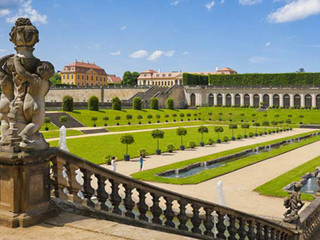
Gross-Sedlitz Baroque Garden (B)
The Gross-Sedlitz Baroque Garden was an especially important project to Augustus the Strong: It was to become the venue for staging the festivities for the Polish Order of the White Eagle. For that purpose, the Elector bought the park and castle in 1723 from his General Adjutant of the Saxon Army, Count von Wackerbarth, and had it redesigned according to his own plans. Matthaeus Daniel Poeppelmann, among others, was commissioned with converting the three-winged Frederick Palace. For lack of money, the works had to be stopped and Poeppelmann’s design for a palace was never realised. Whereas the original plans foresaw a Baroque garden of 96 hectares meaning to impress visitors as the Saxon Versailles, only 12 hectares were developed eventually. But even these 12 hectares make Grosssedlitz the most important garden creation of the 18th century in Saxony. Today the extensive terraced grounds, with two orangeries, fountains and about 60 sculptures, is an admirable work of landscape gardening, inviting the visitor to idyllic walks.
Details to Gross-Sedlitz Baroque Garden
Further to Station C – Pillnitz Castle & Park, approx. 14km
Pillnitz Castle & Park (C)
The plans by Poeppelmann regarding Pillnitz Castle and Park foresaw to make it a venue for summer amusement. It was to have a both representative and cheerful effect on its guests. Once Augustus the Strong had made this property a present to his mistress Countess Cosel. After she had fallen out of favour, he had the estate converted into a pleasure palace. Construction of the River and Mountain Palaces was begun in 1720 after plans by Matthaeus Daniel Poeppelmann. The grandiose castle and park estate, directly located on the Elbe River banks, is deemed a well-known example of the chinoise style merging the architecture from the Far East with that of the Baroque. The pleasure palace with its unmistakable roof shapes is best approached from the water front arriving on an Elbe River steamboat. For the previous owners’ and their guests’ also preferred to arrive by boat, rather than getting there overland. And they loved it to be taken on a pleasure boat ride in imaginatively designed gondolas.
Details on Pillnitz Castle & Park
Further to Station D – Moritzburg Castle, approx. 30km
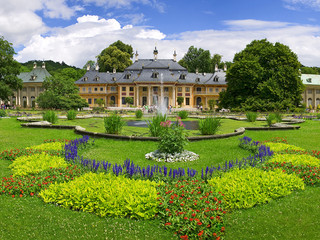
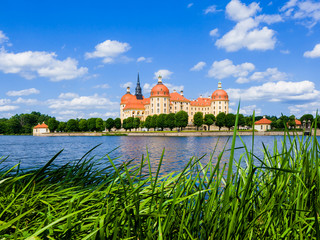
Moritzburg Castle (D)
As early as around the mid-16th century, Duke Moritz had come to regard the forests north-west of the Royal Residence of Dresden as a superb hunting area. Therefore, it did not take long until he had a castle set up there. In 1723 Augustus the Strong commissioned Poeppelmann with the redesign of the estate. Poeppelmann connected the four defence towers, which were linked with each other already, to the main building and added another floor to the towers. In Moritzburg, one can see a synthesis of the arts of European importance which blends very well with the landscape and its artificially created ponds and eight pond houses. The castle accommodating one of the most important collections of hunting trophies in Europe and its interior gorgeously designed with leather tapestry are just two of the many treasures worth being mentioned. And its »Feather Room« was awarded the »European Prize for the Conservation of Cultural Heritage«. Far more than one million feathers have been arranged in that room to form a unique piece of art.
